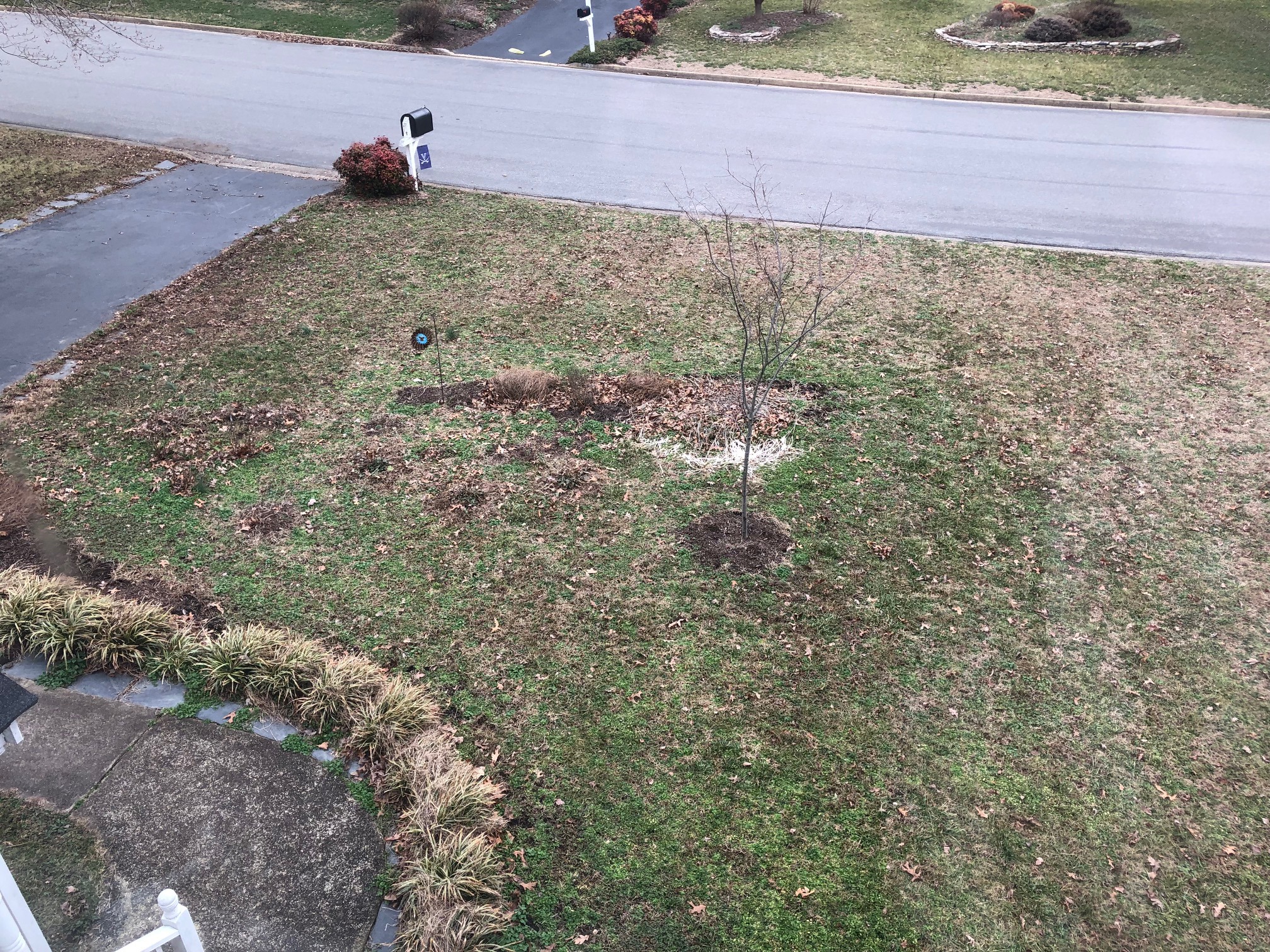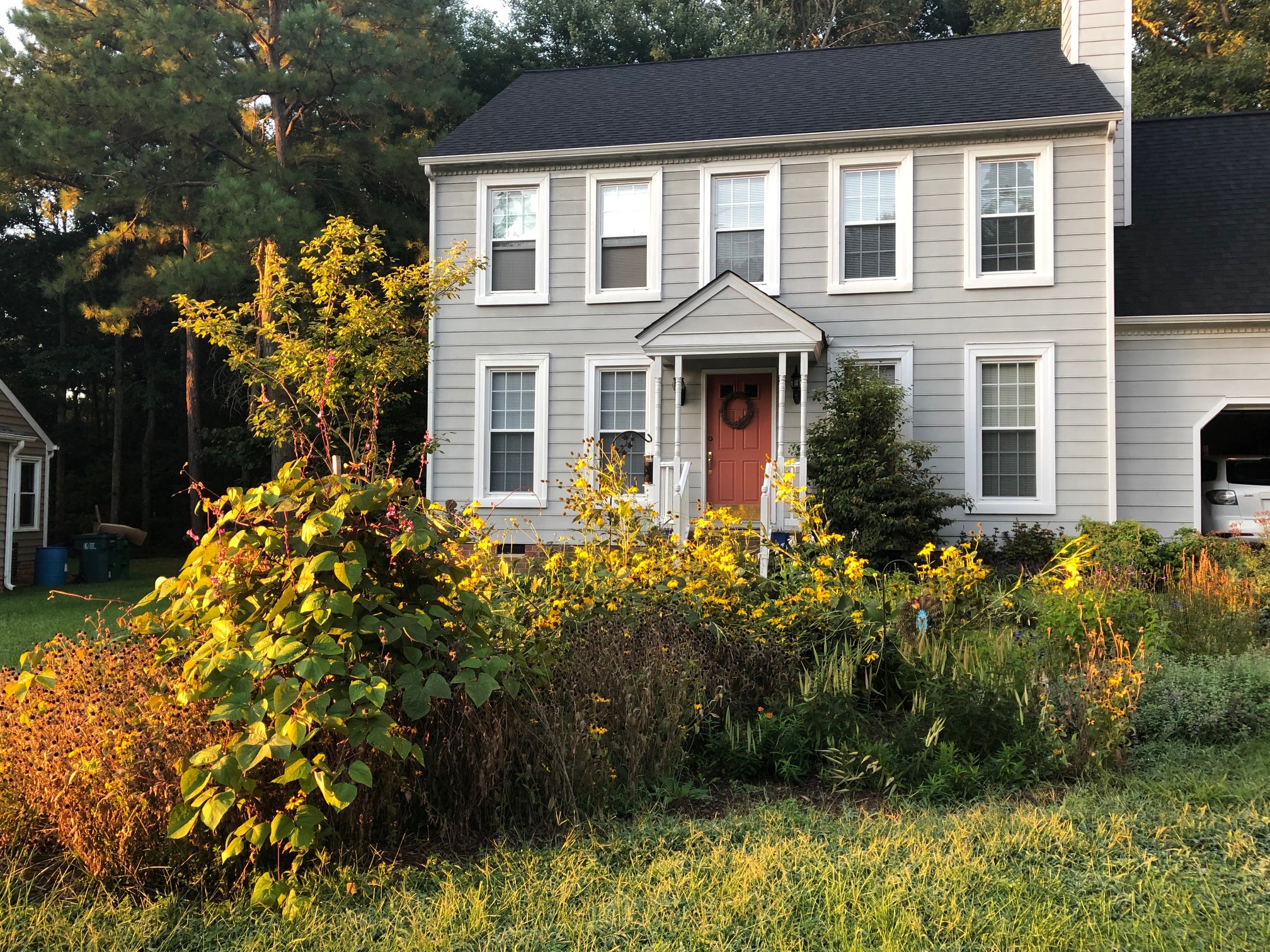Spring Garden Planning
Standing in line at the store recently, I was behind a young mom with four children in tow. I couldn’t help but notice she was buying seeds, soil, a container and various gardening tools. “You must be doing some spring garden planning,” I remarked. She smiled. “It’s all for my kids,” she explained.
I thought about a presentation I had heard earlier that week by Benjamin Vogt at Lewis Ginter Botanical Garden’s Winter Symposium. He raised a compelling question: Who are you gardening for?
This is a highly personal question that reveals more about ourselves than we may care to realize. I thought it would be good to ponder as I’m doing some spring garden planning.
I decided to take a look at what I did last year. Scrolling through photos on my phone, I remembered my foray into creating a pollinator-friendly garden. Although I don’t usually share personal photos on this blog, I’ll make an exception if you’re interested in seeing one person’s authentic attempt to create a garden for pollinators. (A disclaimer: although I work at the Garden, my background is in communication, not horticulture. Most of what I’ve learned is from observing my outstanding colleagues.)
This was the view from the upstairs bedroom in February of 2019. Sadly, one of the best features of the yard, a beautiful sugar maple (Acer saccharum), was lost to a storm in 2017. In its place, I planted a shadbush (Amelanchier canadensis) because it’s a great native tree for seasonal interest and supporting wildlife.
Not long after I took the photo of the desolate front yard, I had the chance to hear Dr. Doug Tallamy speak at the Garden. Tallamy is a professor at the University of Delaware and noted author of “Bringing Nature Home” and “The Living Landscape,” which he co-authored with Rick Darke. One of our Garden volunteers Lorrie Lincoln wrote an excellent blogpost about Tallamy’s talk.
Two things Tallamy said really stuck with me:
To support nature, have a minimum of 70 percent native plants in your yard. There are specialized relationships between animals (including insects and all-important pollinators) and plants that have evolved over thousands of years. This means native plants provide for native wildlife’s needs better than plants that have evolved elsewhere.
Think of plants as bird feeders. I would have thought this is for the seeds, but I learned it’s for the insects on a plant. Ninety-six percent of songbirds feed insects to their young. This protein is vital for survival and development. In short, if you like birds, you’d want to choose plants that support insects and be willing to put up with having some insects on your plants.
Fortunately the Garden’s Spring PlantFest plant sale last year provided a great opportunity for me to purchase some native plants. (This year’s Spring PlantFest is May 1 & 2, 2020). I bought butterfly weed (Asclepias tuberosa) for the monarch butterflies, bee balm (Monarda didyma) for the bees, and giant coneflower (Rudbeckia maxima) for a host of native pollinators. These plants joined a few non-natives including salvia (Salvia guaranitica ‘Black and Blue’) and purple hyacinth bean (Lablab purpureus), as well as a some plants that came back from the previous year: black-eyed Susans (Rudbeckia), bee blossom (Gaura lindheimeri), and catmint (Nepeta racemosa ‘Walker’s Low’).
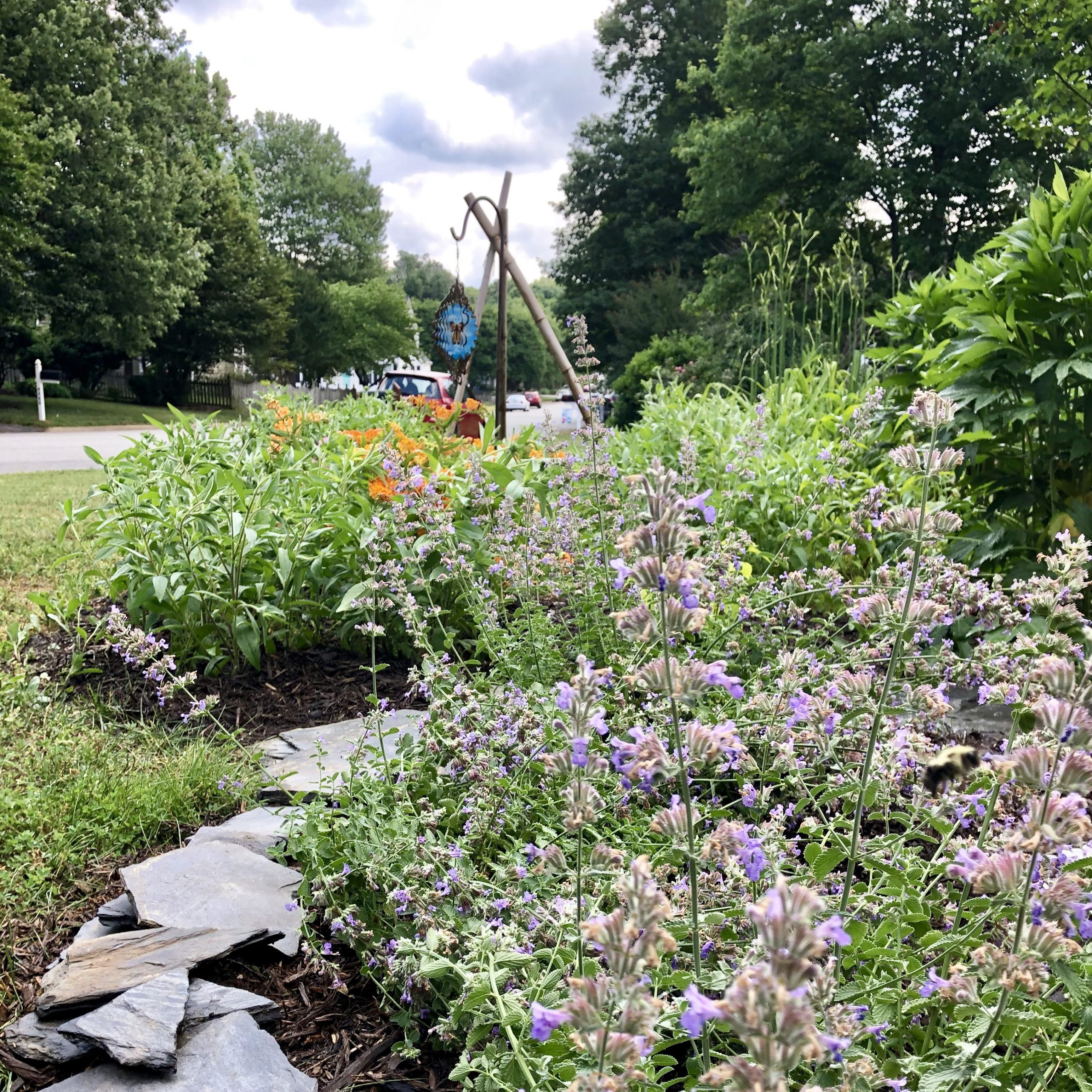
Close-up of the plants in the front yard with catmint (Nepeta racemosa ‘Walker’s Low’) in the foreground.
The purple hyacinth bean choice was because of the botanical illustration classes I’m taking at the Garden: I love their shiny, purple seedpods. While my selections were mainly to support native pollinators, I did include this non-native simply because I think it is interesting to draw. My family was especially intrigued by the bamboo trellis in the front yard and had fun teasing me about our “teepee.”
Here’s a look at my pollinator garden throughout the growing season:
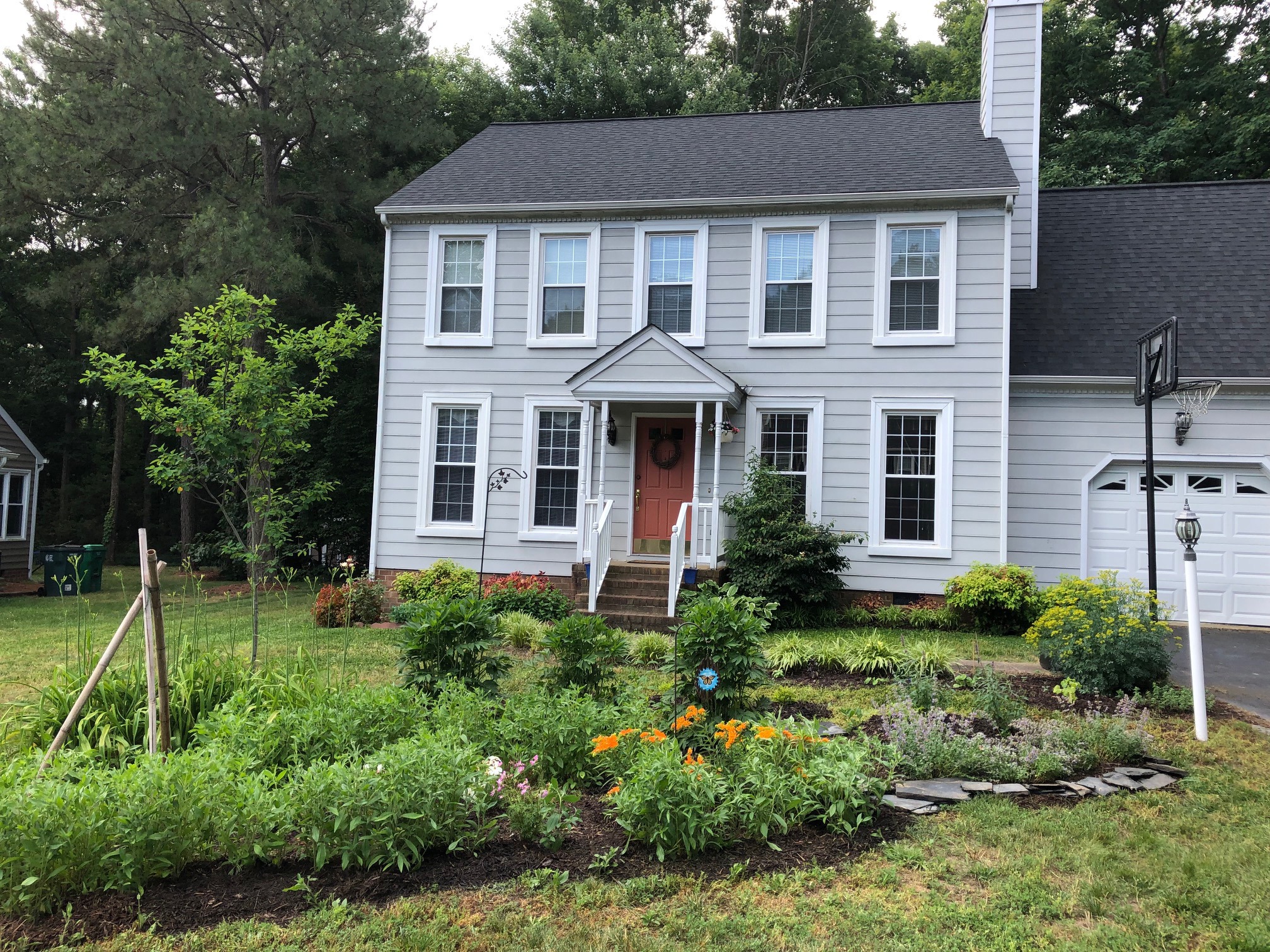
May 27: early in the season. Butterfly weed (Asclepias tuberosa) are the orange flowers blooming in the foreground.
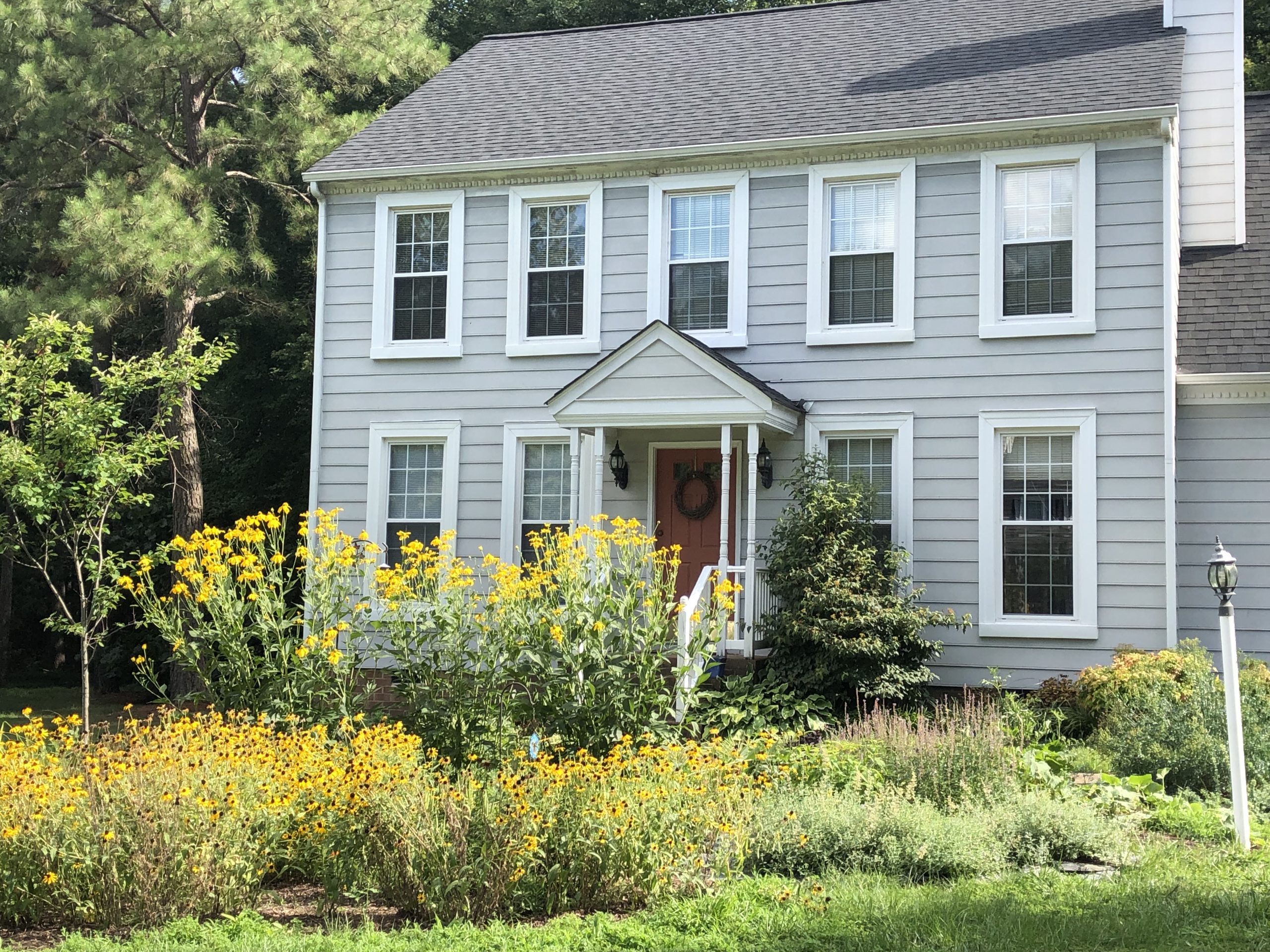
July 12: You can see how the giant coneflowers (Rudbeckia maxima) get their name! They are the tall yellow flowers in the background. Black-eyed Susans (Rudbeckia) are in the foreground.
Certainly I garden for my own enjoyment, but I hope it goes beyond that. One of my favorite experiences last year was standing in the front yard and watching pollinators. I never knew there could be so many! The air was alive with them. I’d call to my children to come see the bees, butterflies, and hummingbirds.
One of my gardening goals is to not just think about myself, but to consider native pollinators and birds; the delicate, interwoven balance of living things; and a commitment so all, including future generations, can experience nature’s wonders. It’s a question that will guide me in 2020: Who are you gardening for?
